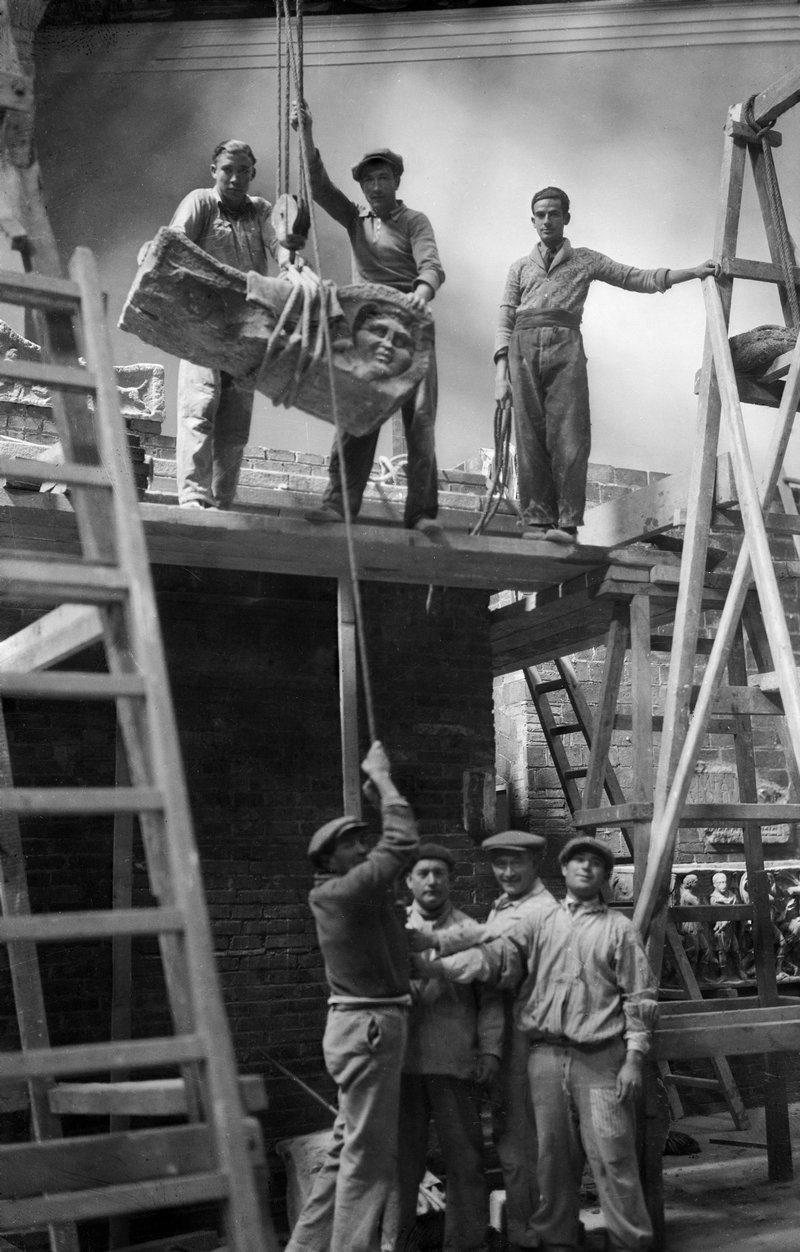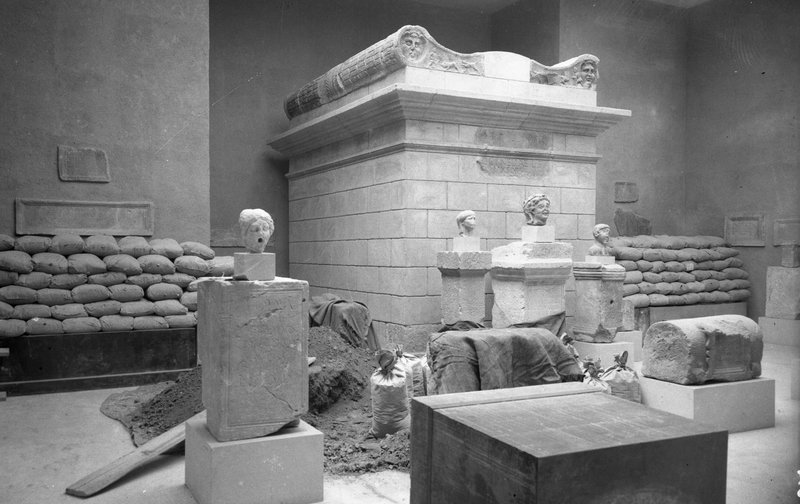HEROISM that saved a nation’s HERITAGE
An exhibition at Catalonia’s Archaeology Museum looks back and remembers the heroic efforts made by staff and experts to protect the country’s artistic and cultural treasures at the onset of the Spanish Civil War
During conflicts, art usually ends up one of the losers. But sometimes there are heroes who risk their lives to save artworks from the destruction of war. Their efforts often go unnoticed and unrecognised. An example is what happened to Catalonia’s archaeological heritage in the Civil War, which is told in the exhibition, Arqueologia a l’exili (until October 6), with which Catalonia’s Archaeology Museum (MAC) begins a new stage under new head, Jusèp Boya.
MAC is one of the country’s most important museums, and one of its most cursed, as can be seen from the instability caused by a long list of directors in the past 20 years, many who lasted only months. Boya says this is the reason for the exhibit, organised with Memorial Democràtic, the body devoted to recovering historical memory.
The museum has a great pedigree, with its origins in the 18th-century Acadèmia dels Desconfiats, the forerunner for the Acadèmia de Bones Lletres, which in the 19th century began collecting Roman remains. That led in 1879 to the Provincial Museum of Antiquities, with the Museum of Art and Archaeology opening in 1915. In 1932, the collections of the institutions were merged into the embryo of the MAC, in the Palace of Graphic Arts. Pere Bosch i Gimpera, the father of Catalan archaeology, modernised the services and established a scientific methodology.
The new museum opened in 1935, although without any representatives from the Catalan government, which had been imprisoned for the events of October 6 1934. Yet, president Lluís Companys visited after his release, as it was a project the Catalan government believed in. “With the Museum of Art in the Palau Nacional, the MAC was the great national museum project of the Republican Catalan government,” says Boya.
The start of the war
It was not to last. In 1936, the Civil War began and the country was immersed in widespread destruction that also affected its heritage. To combat this, the Catalan authorities began a curation programme, with Bosch i Gimpera coordinating the country’s archaeological heritage, with regional delegations gathering up public and private items, which were transferred to the building on Montjuïc. Despite the war, “the life of the museum went on,” says Àngels Casanovas, the exhibition’s curator and a conservator at the MAC. The restoration workshop was at full capacity at the time, repairing the wounds that had been dealt to the items.
Things became complicated in 1938 with the bombing of Barcelona, and with the nearby Palau de l’Agricultura (today the Lliure Theatre) turned into an armaments store, making the area a military target.
Fortunately no bombs fell on the MAC, but those in charge had prepared for the worst possible scenario. A number of bomb shelters were set up inside the building to protect the artworks, and the most important, such as the iconic statue of Asclepius, were packed with sandbags. They even built a tunnel – which still exists – to provide shelter for the museum’s brave employees.
As Franco’s troops advanced, Madrid’s artistic heritage also ended up in Barcelona (it was kept in the Pedralbes monastery, which a few years ago devoted an exhibition to it). Yet, when the Catalan capital was no longer safe, the decision was made to move the heritage closer to the border, with the archaeologists staying in Mas Perxés in Agullana.
To Geneva for safekeeping
In the Figueres Agreement, in February, the Sant Ferran castle was chosen as a staging post for the Catalan and Spanish artworks, which were to be sent to Geneva for safekeeping under the protection of the League of Nations. In the meeting that led to the decision, international experts gathered by painter Josep Maria Sert laid down the protocols for safeguarding artworks during conflicts, with World War II around the corner.
Between February 4 and 9, the artworks and the archaeological remains crossed the border in 60 train carriages and left for Geneva. “Under constant bombing by Franco’s forces, and in poor weather conditions, sharing the route with a mass of displaced people, they made their way into exile,” says Boya, who adds: “Our cultural treasures, symbols of thousands of years of history, were in danger of disappearing.” Yet they reached Switzerland safely, even if that was not the end. Representatives of the Franco regime lobbied the League to return the heritage, which it did in March.
And here began another episode covered by the exhibition: the campaign to smear those who had saved the artworks, including Bosch i Gimpera, who was accused of stealing items. He went into exile, where he added to his international reputation but never returned to Catalonia (he died in 1974). He went to Mexico, as did the Ramon Lligué sisters, Adela and Sofia, daughters of a Catalan political leader, secretaries at the MAC, and symbols of the loyalty that the museum’s employees showed until the end.
The young Falangist archaeologist Martín Almagro Basch was put in charge of the institution. “He didn’t sack anyone, but he prevented conservators from attending international congresses. He wouldn’t let them go anywhere and took credit for their work,” says the curator. The spirit that had driven the museum was purged: “It lost its national vision and became just another provincial museum,” says the director. But what happened during the dark days of the dictatorship is another story, and a good subject for a new exhibition.
feature






